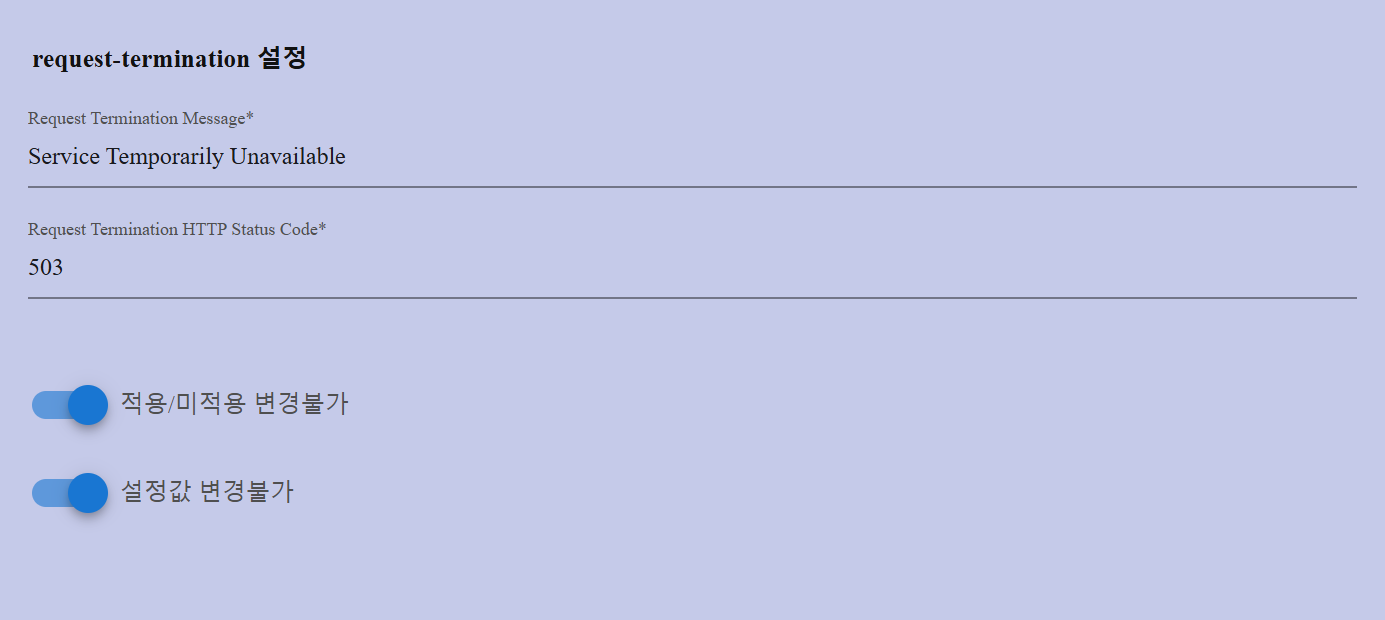Request Termination
Overview
The Request Termination policy is used to immediately block all incoming requests to an API and return a predefined HTTP response. It is commonly applied during maintenance windows, service shutdowns, or emergency stops, ensuring that the API does not forward requests to the backend service.
When enabled, this policy returns a custom message and HTTP status code to the client, without invoking any further processing or backend integration.

Configuration Details
| Field | Description |
|---|---|
| Request Termination Message | The message returned to the client when the API is forcibly terminated. Example: Service Temporarily Unavailable |
| Request Termination HTTP Status Code | The HTTP status code returned with the response. Common values: 503 (Service Unavailable), 403 (Forbidden), 404 (Not Found), etc. |
Cannot be changed: When enabled, this policy cannot be removed or disabled.
Cannot change the setting value: When enabled, the configuration values (message and code) cannot be modified.
Example Output
If configured as shown in the image above:
HTTP/1.1 503 Service Unavailable
Content-Type: text/plain
Service Temporarily Unavailable
This response is returned to all clients calling the API while the policy is active.